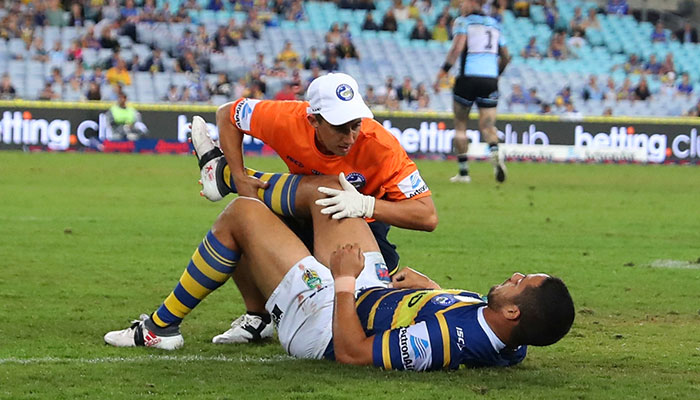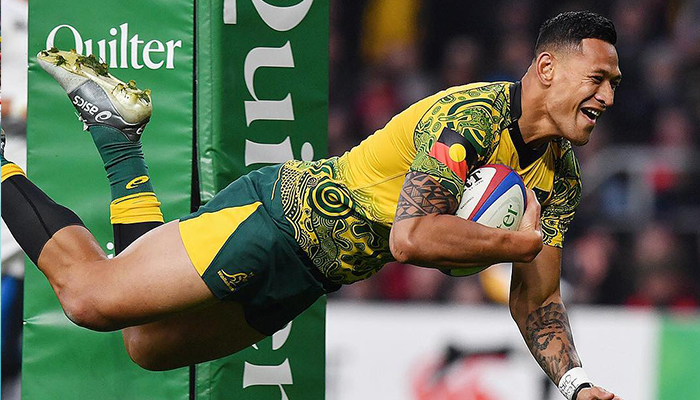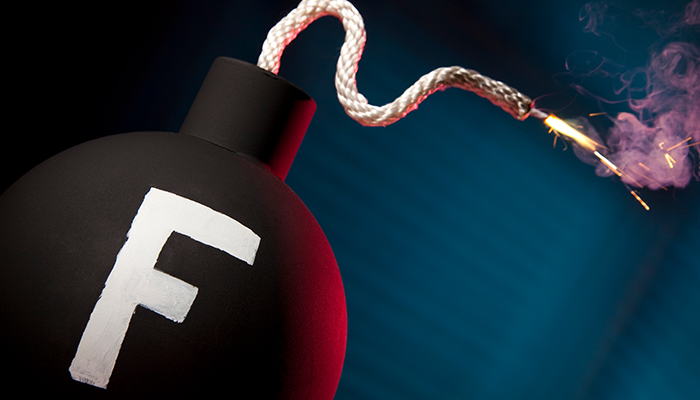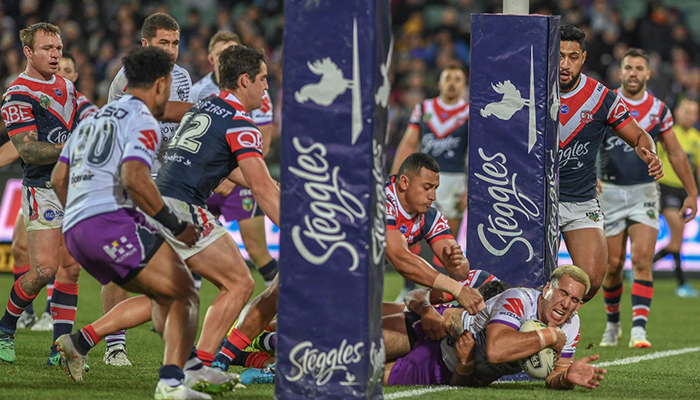Do you like the idea of your child falling off a cliff?
Most parents would say no. And yet every weekend, thousands of Australian parents stand on the sidelines, cheering on their children in sports where the physical impact on them can be almost as brutal.
“The amount of energy when two 120 kilogram players hit each other at around 10 kilometres per hour is roughly equivalent to a 120 kilogram person free-falling to the ground from 10 metres,” says biomechanics and physical performance researcher Dr Tim Doyle, who is working with the South Sydney Rabbitohs to quantify the physical load experienced by professional rugby league players.
The good news is that for an average 14 year-old, that cliff fall isn’t quite so perilous.
“The impact of tackles is greatly reduced in younger players,” says Doyle. “When two 80 kilogram players running at seven kilometres per hour collide, the energy of the impact is reduced by about a third compared to the previous example.”

Star Parramatta Eels player Jarryd Hayne receives treatment for a hip injury in NRL Round 3.
Even so, Doyle says that anyone stepping on the football field should make sure they’ve received the proper coaching required to prevent injury. He implores volunteer coaches to consult the coaching pathways provided by Rugby Australia, the NRL and the AFL, so that children are taught to play safely.
“The current progressions of football codes are designed to ensure children learn proper technique before being allowed to play full contact sports,” says Doyle. “Professional football players are coached about how – and importantly, where – to absorb the energy of the impact.
"And from the very beginning, learning where to place yourself – your head, in particular – during a tackle is critical to avoiding injury.”
As for the question of whether children should be divided in teams by weight rather than age, Doyle says that, again, it comes down to adequate coaching and common sense among game officials to ensure the game is being played safely. Rugby Australia, for example, recently introduced size-for-age rules for players between 10-15 years of age, with players moved up or down age groups if they are assessed to be outside set guidelines.
“Size mismatches are common in adult sport and it is important that young players learn how to play against opposition players of different sizes,” says Doyle.
“Think of the Wallabies, for example. Nick Phipps is 1.8 metres tall and weighs 87 kilograms. Rory Arnold is 2.08 metres and 120 kilograms. Most teams have a Rory Arnold on their side, so players like Nick Phipps need to know how to safely tackle a player much bigger than they are.”
Even with expert training, professional football players commonly experience collision injuries, such as concussion, which Doyle says is thankfully receiving more attention from game officials.
“If concussion is not appropriately managed, long term issues such as chronic traumatic encephalopathy (CTE) can occur,” Doyle says. “Football codes now treat head injuries very seriously. For example, the introduction of the ‘blue card’, being trialled in Rugby Union, allows the referee to send off a player for assessment, with the player only allowed to return to play if they pass.”
Doyle says that for both professional football players and ‘weekend warriors’, time and rest are often the only way to recover from injury, even if the player is itching to get back on the field.
“At the end of the day, player welfare should be of utmost importance."
Common football injuries: what to do
Don’t have a team of physios and sports doctors on the sidelines with you? Here’s how to treat three typical footy injuries, according to Doyle.
- Hamstring strains are very common, and recovery time ranges from one week to months, depending on the severity. Apply R.E.S.T (Rest, Ice, Compression, Elevation).
- Concussion can be an unseen injury, with players often seeming OK after a knock on the head. Remove the player from the field, monitor them closely, and seek medical advice. If your sport has concussion guidelines, follow them. A series of questions may help to diagnose if a concussion is present (what day is it?, what’s the score?, who are we playing?, did you win the game last week?). Rest is the only real treatment option, and players may be back in a week, a few weeks, or longer depending on the severity.
- Joint dislocation (shoulder or finger dislocation): Do not attempt to put back in place unless you are a qualified medical professional that is trained to do so. Immobilise the limb/finger and immediately seek qualified medical assistance.



